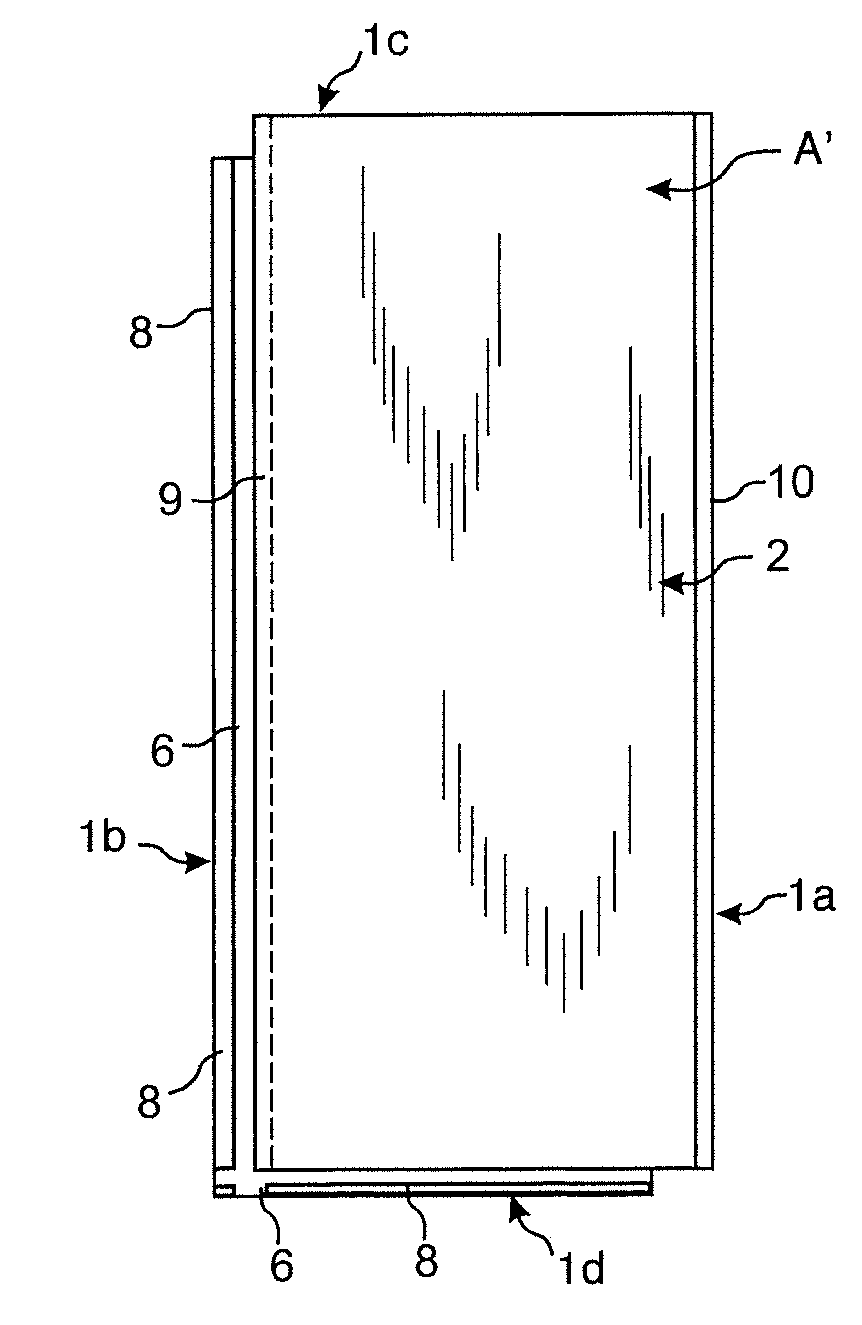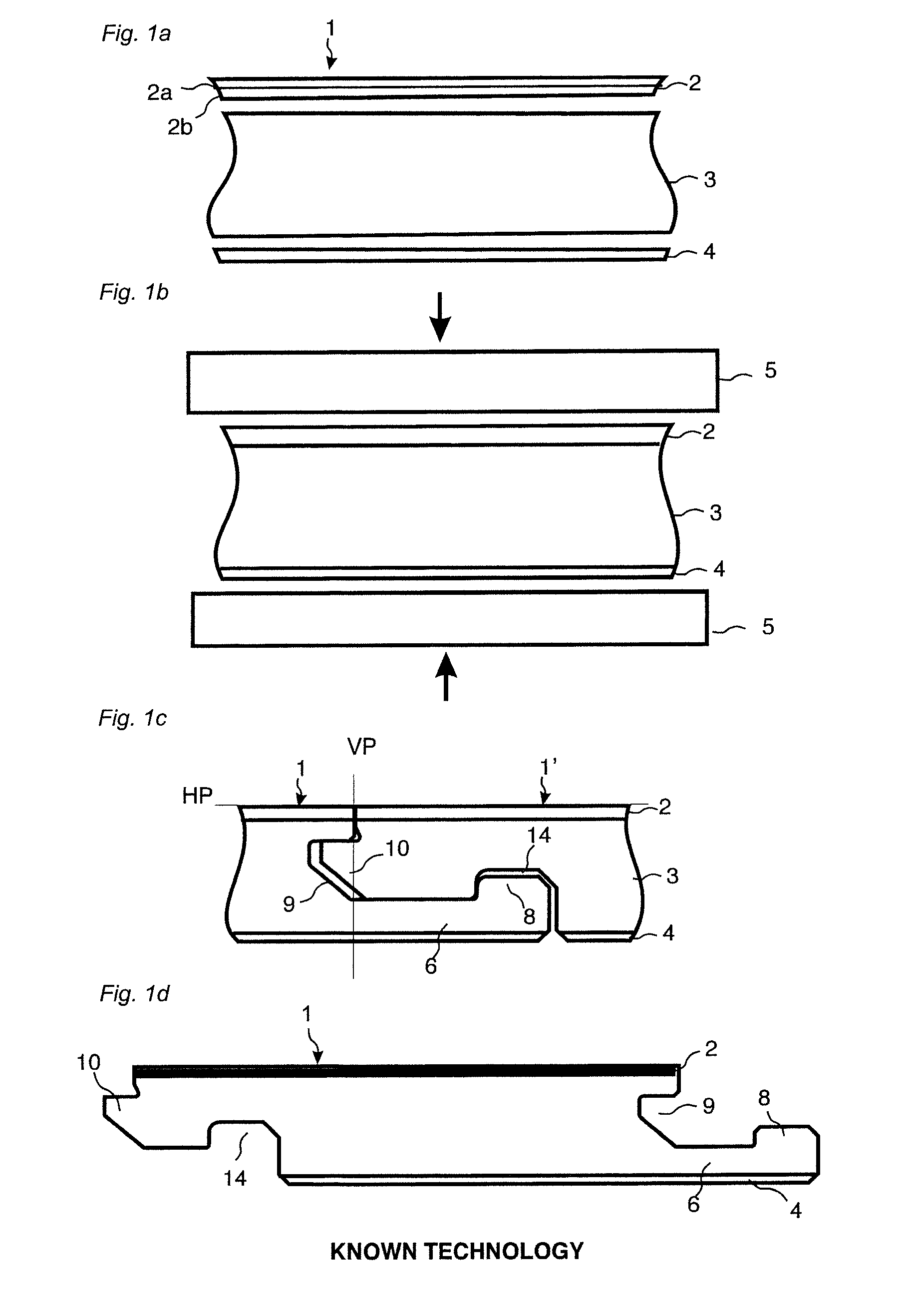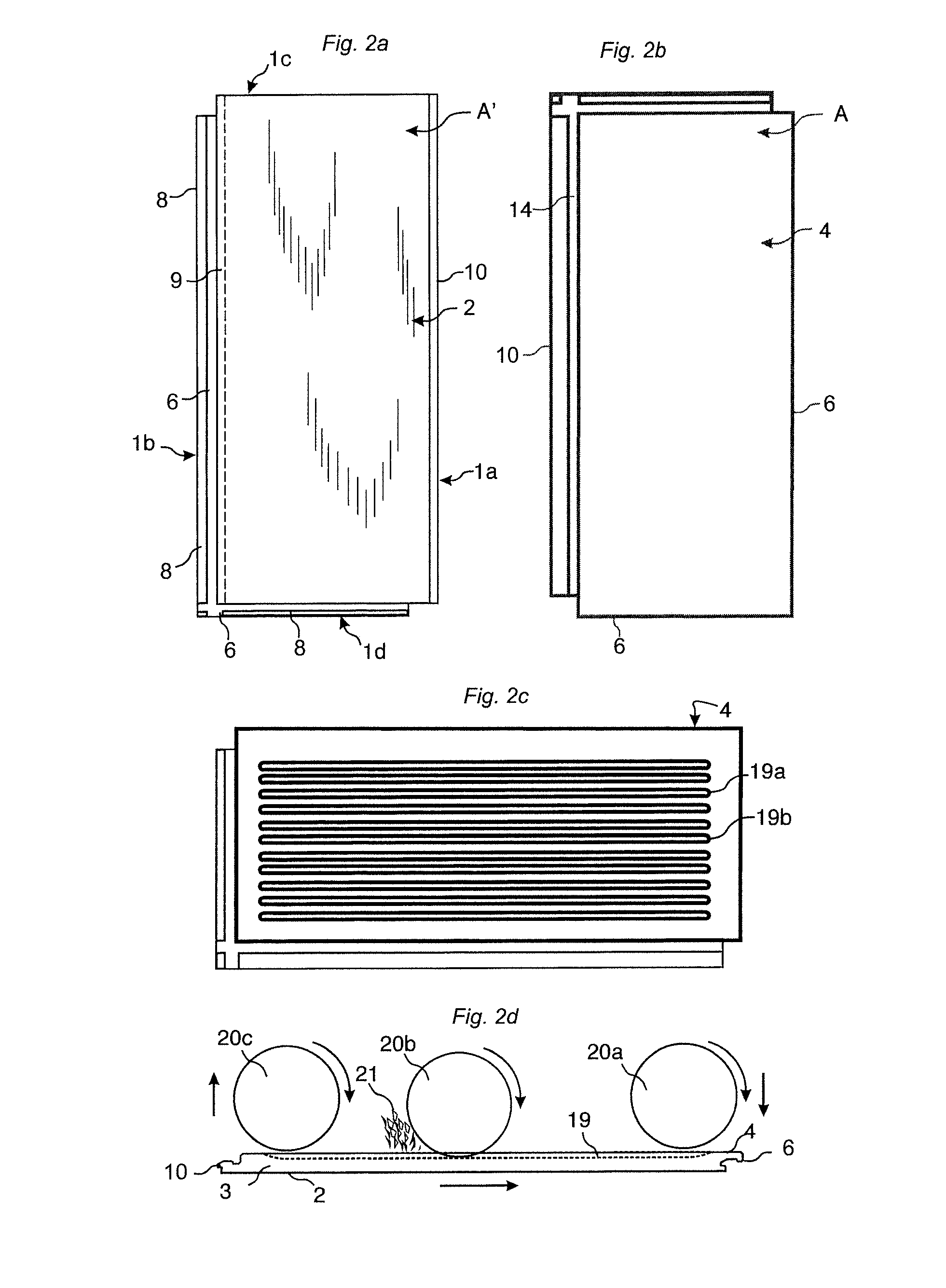Panel forming
a technology of forming panels and forming sheets, which is applied in the direction of building components, floor coverings, domestic articles, etc., can solve the problems of increasing the price of wood fibres and thermosetting resins, limiting further cost savings, and predicting major increases
- Summary
- Abstract
- Description
- Claims
- Application Information
AI Technical Summary
Benefits of technology
Problems solved by technology
Method used
Image
Examples
first embodiment
[0073]floorboards provided with a mechanical locking system according to the invention is shown in FIGS. 2a-2d. The floor panel comprises a locking system on long 1a, 1b and short 1c, 1d edges. FIG. 2a shows the front side with the surface layer 2 and FIG. 2b shows the rear side with the backing layer 4. The area of the surface layer A′ is essentially the same as the area A of the backing layer 4. FIG. 2c shows that essentially vertical core grooves 19a, 19b, with an opening toward the rear side or the panel, may be formed on the rear side in the backing layer 4 and into the core 3 that may be a wood based board such as for example HDF, chipboard or plywood. The core may also comprise plastic material. Such forming may be made with rotating saw blades 20a as shown in FIG. 2d. Carving may also be used. The panels are generally machined with the surface layer 2 pointing downwards. The jumping saw blade is displaced towards the panel 20a from above, or below if the surface layer 2 is p...
embodiment 1
[0105]2. The building panels , wherein the backing layer (4) comprises at least three core grooves (19) spaced horizontally and inwardly from the locking system at one pair of opposite edges.
[0106]3. The building panels as in embodiments 1 or 2, wherein the area (A) of the backing layer is less than 80% of the area of the surface layer (A′).
[0107]4. The building panels as in any one of the embodiments 1-3, wherein the entire parts of at least one core groove (19) is arranged inside the vertical plane VP at all edges.
[0108]5. The building panels as in any one of the preceding embodiments, wherein the building panels are rectangular with long edges (1a, 1b) and short edges (1c, 1d) and wherein the core grooves (19) are essentially parallel with the long edges.
[0109]6. The building panels as in any one of the preceding embodiments, wherein the core groove depth (GD) is at least 0.3 times the floor thickness (T).
[0110]7. The building panels as in any one of the preceding embodiments, wh...
embodiment 9
[0119]10. The method wherein the mix is scattered on the lower side of the core.
[0120]11. The method as in embodiment 9 or 10, wherein the mix is scattered on the upper and lower side of the core (3).
[0121]12. The method as in any one of the embodiments 9-11, wherein the core is HDF.
[0122]13. The method as in any one of the embodiments 9-12, wherein the core grooves are formed prior to the forming of the locking system at long or short edges of the floor panels.
[0123]14. The method as in any one of the embodiments 9-13, wherein the core grooves are formed by a jumping tool comprising several rotating saw blades or a carving tool.
[0124]15. The method as in any one of the embodiments 9-14, wherein the pressed board is more convex than the floor panels.
[0125]16. A wood based floor panel having an upper (2) and a lower (4) layer of solid wood, characterised in that the lower layer comprises cavities (26) and that the upper layer (2) forms an upper part (27) of the cavities (26).
PUM
| Property | Measurement | Unit |
|---|---|---|
| temperature | aaaaa | aaaaa |
| pressure | aaaaa | aaaaa |
| density | aaaaa | aaaaa |
Abstract
Description
Claims
Application Information
 Login to View More
Login to View More - R&D
- Intellectual Property
- Life Sciences
- Materials
- Tech Scout
- Unparalleled Data Quality
- Higher Quality Content
- 60% Fewer Hallucinations
Browse by: Latest US Patents, China's latest patents, Technical Efficacy Thesaurus, Application Domain, Technology Topic, Popular Technical Reports.
© 2025 PatSnap. All rights reserved.Legal|Privacy policy|Modern Slavery Act Transparency Statement|Sitemap|About US| Contact US: help@patsnap.com



